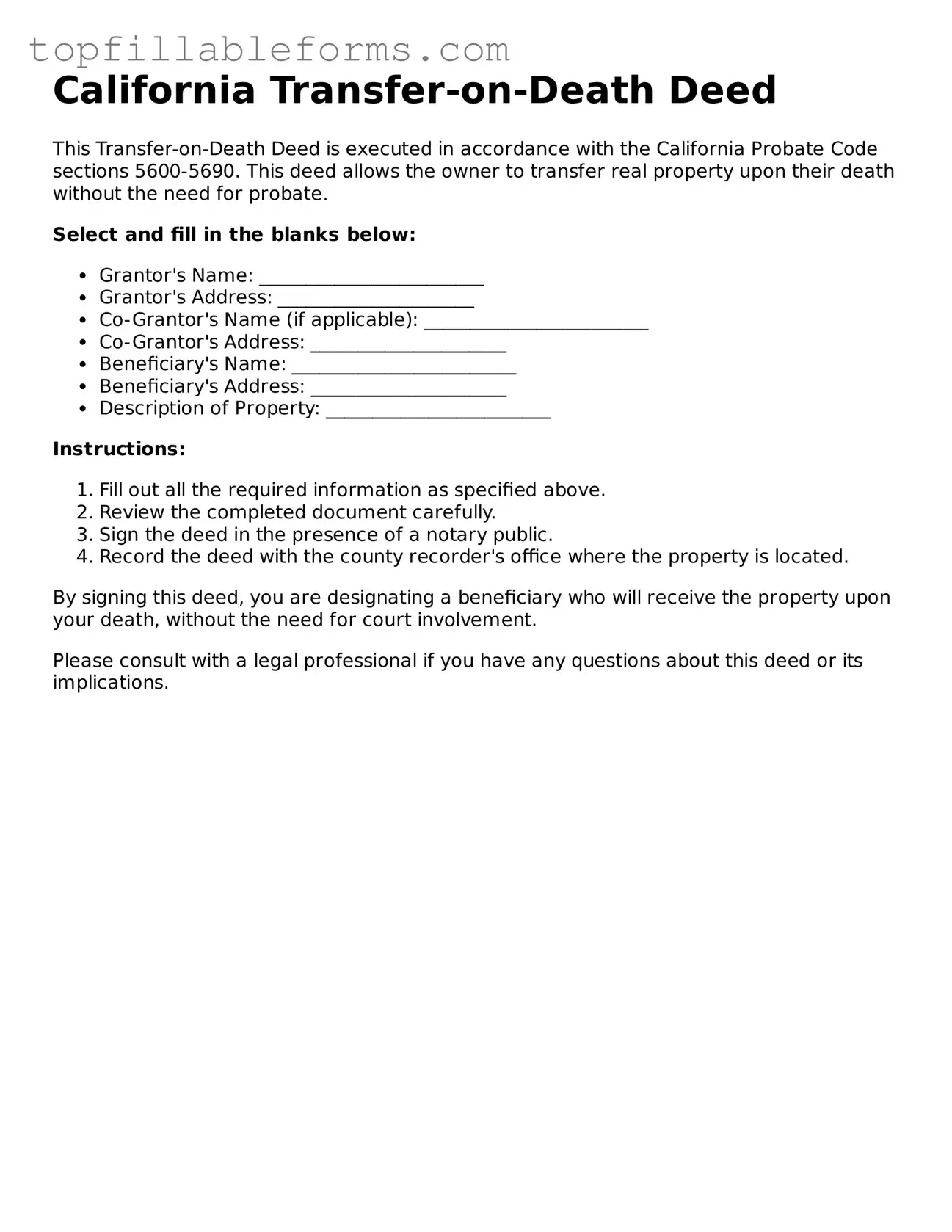California Transfer-on-Death Deed
This Transfer-on-Death Deed is executed in accordance with the California Probate Code sections 5600-5690. This deed allows the owner to transfer real property upon their death without the need for probate.
Select and fill in the blanks below:
- Grantor's Name: ________________________
- Grantor's Address: _____________________
- Co-Grantor's Name (if applicable): ________________________
- Co-Grantor's Address: _____________________
- Beneficiary's Name: ________________________
- Beneficiary's Address: _____________________
- Description of Property: ________________________
Instructions:
- Fill out all the required information as specified above.
- Review the completed document carefully.
- Sign the deed in the presence of a notary public.
- Record the deed with the county recorder's office where the property is located.
By signing this deed, you are designating a beneficiary who will receive the property upon your death, without the need for court involvement.
Please consult with a legal professional if you have any questions about this deed or its implications.
